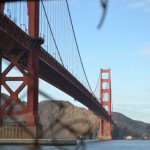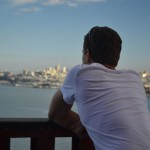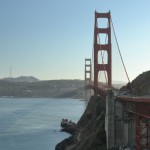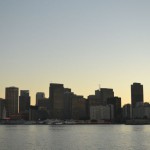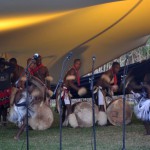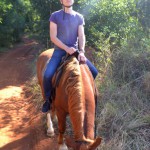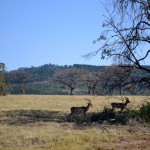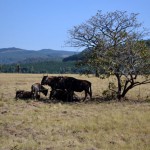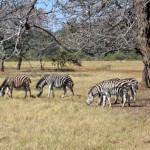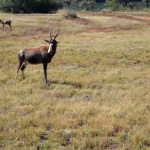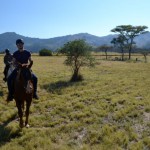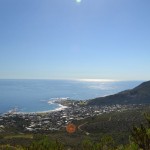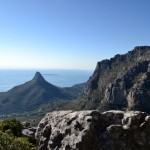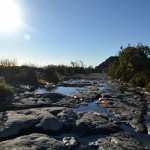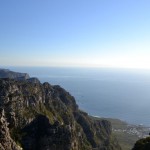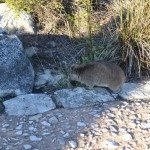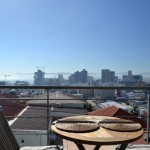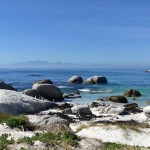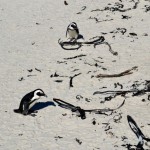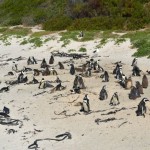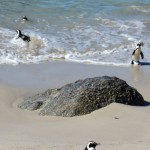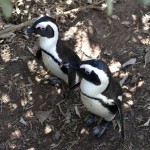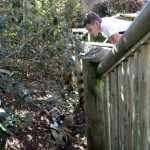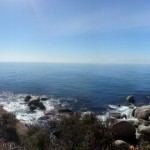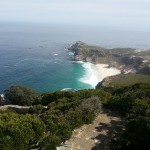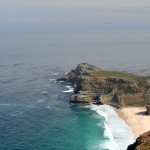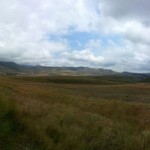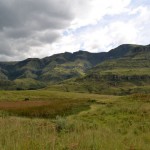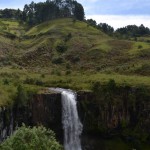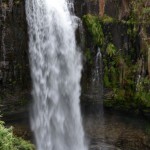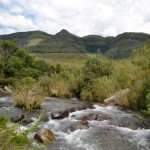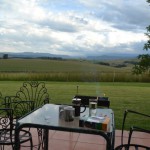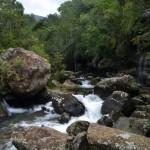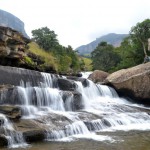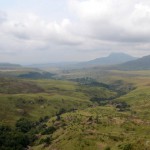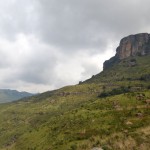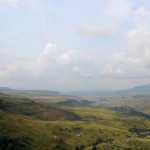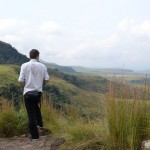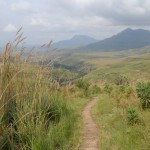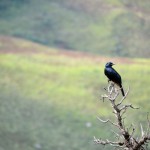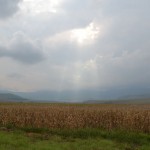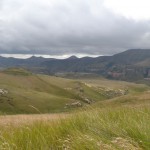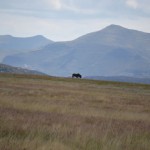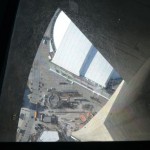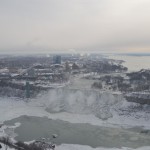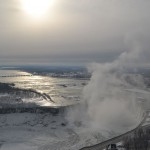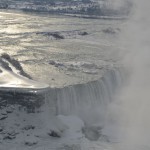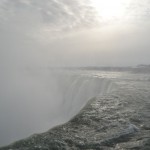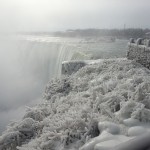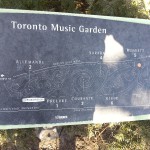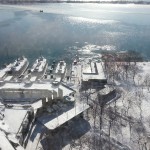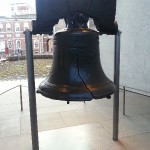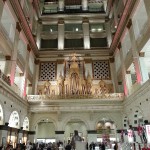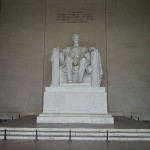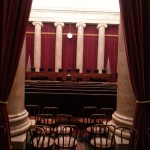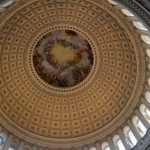From 15 to 22 June, we managed to get a week of leave at the same time and decided to go to Namibia. The trip was booked rather spontaneously, and Namibia seemed to be a good choice since flights were cheap and it was the ideal time to go there – it is dry season, so the animals are out at the waterholes, it is not too hot in the daytime, and it is not high season either.
We flew to Windhoek and rented a fully camping equipped 4×4 (a Nissan Single Cab). Camping equipped meant in that case that it came with a collapsible tent on the roof of the car, plus everything that you need, including a gas cooker, a fridge, dishes and cutlery, bedding, and even two camping chairs. We used the car quite extensively, driving more than 2,300km in the seven days we were in the country – mostly on unsurfaced roads, since only the main axes in Namibia are surfaced. However, in a such sparsely populated land of only two million inhabitants, even the unsurfaced roads were mostly in good condition and you could still go 80 or 100 km/h (with a few exceptions where the road was really terrible for dozens of kilometers).
It is really an interesting thing to drive through this country, since it is mostly desert, with the road often going straight without a curve as far as you can see. And desert is not equal to desert – there was sandy desert, rocky desert, moon landscapes, red mountains, …
From Windhoek, we drove up to Etosha National Park (with a stop in Otjiwarongo for the night). The National Park is centered around the Etosha Pan, which is a huge salt lake that is dry for almost the complete year. Due to the salty ground, nothing grows in the pan. We stayed at Okaukuejo Camp, which is one of several camp sites/lodges that have been built next to one of the waterholes, so that you can watch animals even after dark, when you are no longer allowed to drive around the park (generally driving after dark is not recommendable in Namibia due to the amount of wildlife that is around). The National Park was amazing. We spent a day and a half just driving around the park, and stopping at waterholes or wherever we saw animals – and we saw a lot of them: elephants, zebras, giraffes, ostriches, springboks, oryxes/gemsboks, kudus, and even in the very end a lion (we didn’t see it at first, and were wondering why so many cars were stopped, when we saw it taking a nap under a tree!).
In Etosha, we also had our first flat tire – we must have punctured it when we were driving through the park, as it was flat when we woke up. However, with all the necessary tools, and one of the two spare tires easily accessible at the back door of the car, it took no more than 15 minutes to change it.
After Etosha, we went back south and stopped for a night at the Spitzkoppe – one of the many names from which you can still see the history of having been a German colony for about 30 years until 1915. The Spitzkoppe is a stunning group of red granite peaks sticking out from the surrounding plains, and the campsite was quite amazing too – the individual sites are scattered around the base of the mountain, with just a long drop toilet at each site, so we had a place just for us with the next campers multiple hundred meters away, just between the rocks. The scenery was absolutely amazing, especially at sunset. At night, however, we witnessed the drawback of that spot: It was quite windy, which being somewhat elevated from the plain around didn’t make any better, and the rocks created some kind of wind tunnel, so the tent was violently flapping in the wind all night, and neither of us slept very well.
Thankfully, we didn’t have a very long way to go the next morning. We were only making our way down to Swakopmund on the coast, but on the way, we stopped on the Welwitschia Plains. Welwitschia (named after the Austrian botanist who first accounted for them) are strange plants that only grow on the elevated gravel fields in Namibia and Angola. They look a bit like huge, dried-out cabbages, and have only two long leaves that spiral around the center. However, due to the harsh climate, parts of these leaves usually dry out and break, so that it looks as if they have more than two leaves. The biggest of these plants can be more than 2m in diameter, and up to 2000 years old.
From the Welwitschia Plains, we then made our way down to Swakopmund. Swakopmund really still feels like a German outpost, and could at first sight be mistaken for a town at the North or Baltic Seas. Lots of shops have German names, and even some of the old street signs are still visible (e.g., Kaiser-Wilhelm-Straße). The town itself was very sleepy and relaxed, which is at least partly due to the fact that it is not the high season – I have read that 40% of tourists to Namibia are German speaking, and it is quite telling that the only flight connection to Windhoek’s small airport outside of Southern Africa seemed to be Frankfurt.
After Swakopmund, our next destination was the Namib-Naukluft National Park, more specifically the Sossusvlei. The way there was quite long, and had the worst stretch of road of our trip which was extremely bumpy for probably around 100km. Also, we had our second flat on that stretch of road – thankfully we had bought a new tire in Swakopmund to replace the flat one, so we didn’t have to worry about having to drive around without a spare tire.
At Sossusvlei, we stayed at Sesriem Camp, which is the only camp site behind the gates to the Park, which means that you can leave about 45 minutes earlier then everyone else to be the actual Sossusvlei for sunrise. However, since our car got stuck in the deep sand on the last few kilometers, we had to turn around and take one of the 4×4 shuttles that the National Park operates (with better tires, less weight through all the camping equipment, and an experienced driver). The Vlei itself was amazing – lots of big red sand dunes surrounding the dried out clay and salt pans, in which there is no life, just a few dead and weirdly eroded trees. We climbed some of the dunes and walked around in the morning light – it was just stunning.
After the Sossusvlei, we made our way back to Windhoek, stopping close to Solitaire for a night. The last night we spent in Windhoek: after having returned our car, we had the first night back inside, in an apartment and not our tent. Although the tent was very comfortable, and not too cold either, what got to us a bit was the dust. The drivers cab was clean, and so was the tent, but everything else, including the inside of the back of the car where our luggage and all the camping equipment was, got completely dusty from driving on all those unpaved roads. So whenever you would unpack something from the car, or open or close the tent, or anything, you would get dusty.
Windhoek itself wasn’t super exciting – it is just a small town, with no real attractions. We had some nice food there, but other than that, Windhoek is definitely not the major draw to come to Namibia. We flew back to Joburg on Saturday afternoon, so that we could still have a relaxing Sunday before going back to work.
All in all, the trip was amazing. We definitely want to go back, since we couldn’t do all of the country this time around – especially the Skeleton Coast and the Kaokoveld in the North West of the country sound amazing too.
Some pictures follow.
-

-
Driving through the Desert
-
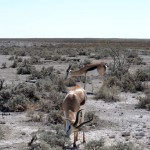
-
Springbok
-
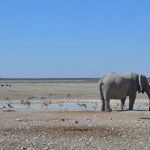
-
Waterhole
-
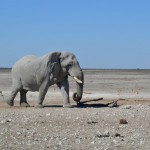
-
Waterhole
-
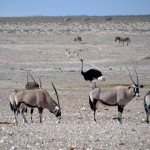
-
Waterhole
-
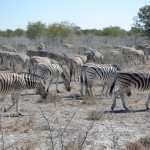
-
Zebras
-

-
Elephants at a Waterhole
-
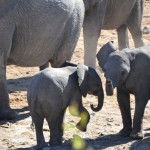
-
Elephants at a Waterhole
-
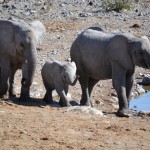
-
Elephants at a Waterhole
-
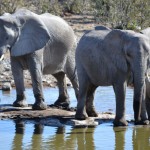
-
Elephants at a Waterhole
-

-
Elephants at a Waterhole
-
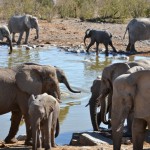
-
Elephants at a Waterhole
-
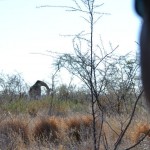
-
Our first Giraffe
-
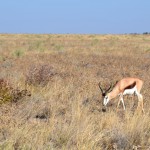
-
Springbok
-
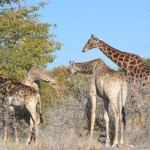
-
Giraffes
-
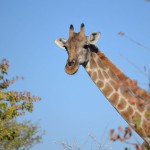
-
Watchu Lookin’ At?
-

-
Kudu
-
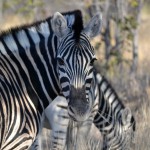
-
Hello there!
-
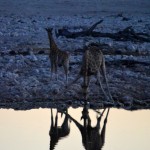
-
Giraffes at the Waterhole
-

-
Giraffes at the Waterhole
-
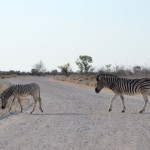
-
Zebra Crossing
-
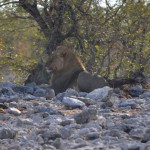
-
Lion Sitting
-
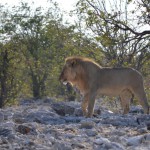
-
Lion Walking
-

-
Giraffe on the Move
-
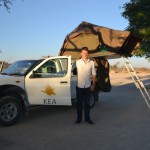
-
Me with the Car
-
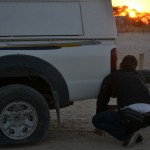
-
Changing Tire at Sunrise
-
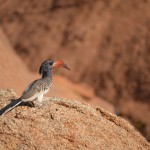
-
Bird with Funny Beak
-
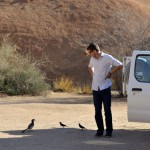
-
Me and the Gang
-
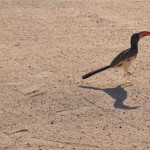
-
Jumpy Bird
-

-
Spitzkoppe Panorama
-

-
Sunset Watching at Spitzkoppe
-
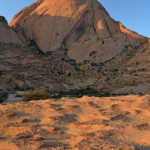
-
Spitzkoppe
-

-
Our Car Parked at Spitzkoppe
-
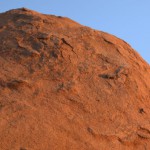
-
Can You Find the Dassie Watching the Sunset?
-
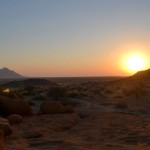
-
Sunset
-
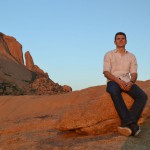
-
Sunset Watching at Spitzkoppe
-
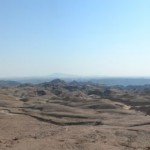
-
Moon Landscape, Close to Welwitschia Plains
-
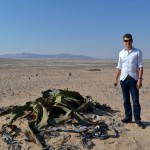
-
Welwitschia
-
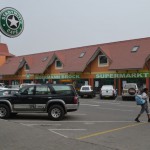
-
Swakopmund – Supermarkt
-
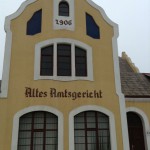
-
Swakopmund
-
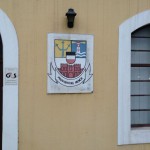
-
Old Coat of Arms – German Imperial Colors
-
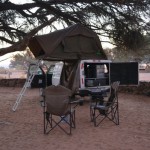
-
Nice Camp Site
-

-
Dunes at Sossusvlei
-
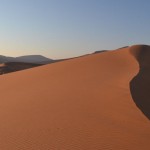
-
Dunes at Sossusvlei
-
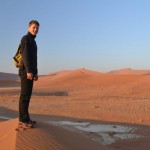
-
On Top of the Dune
-
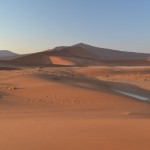
-
Dunes at Sossusvlei
-

-
Dead Vlei
-
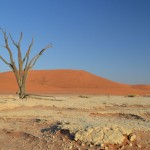
-
Dead Tree
